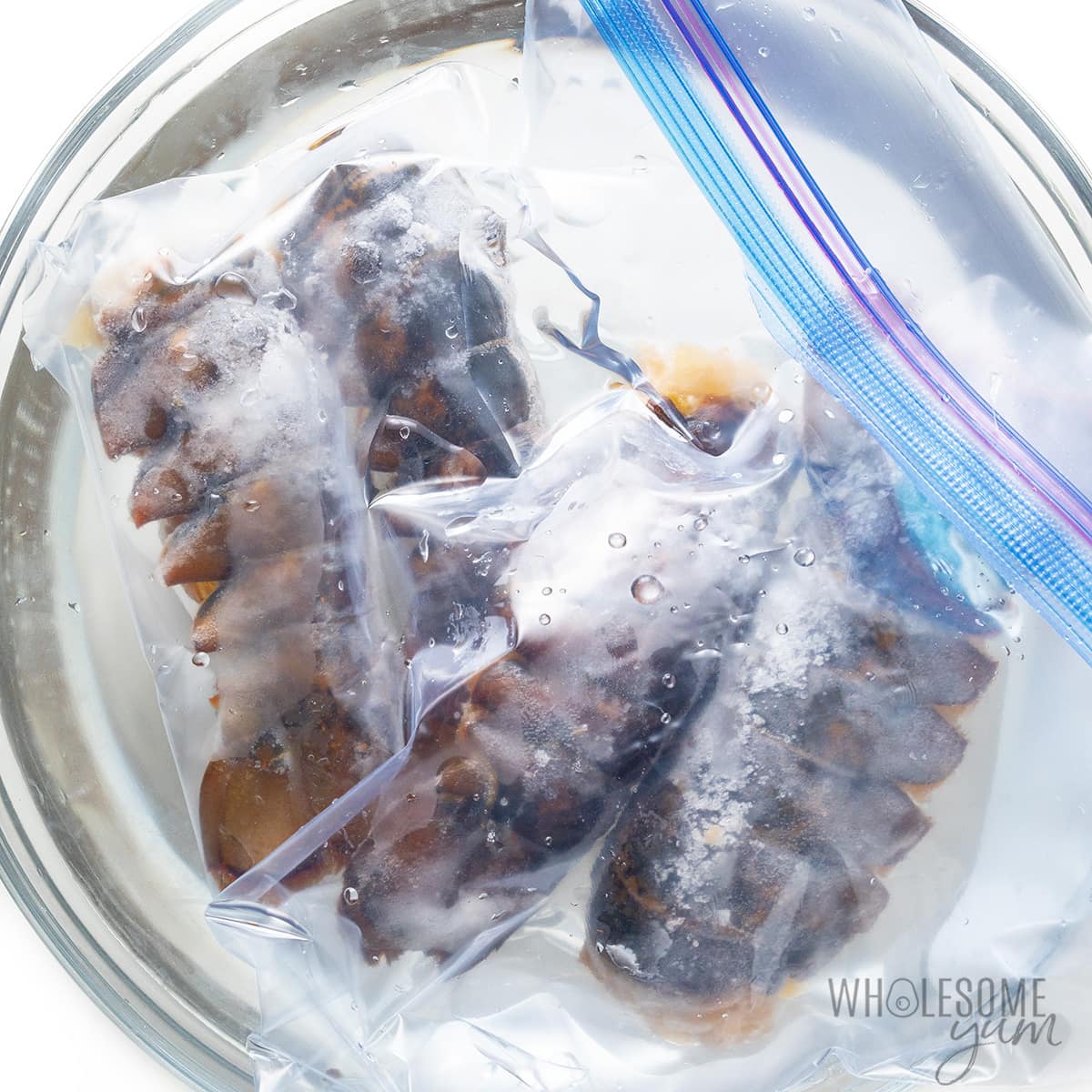It looks like you want to know how to cook frozen lobster tails for a healthy dinner. I may have some bad news for you: you have to let them thaw first. But don’t give up! It’s simple, and I’ll show you several ways to do it based on your time. I’ll also show you 5 different methods for cooking frozen lobster tails after you thaw them!.
Cooking frozen lobster tails from frozen may seem convenient, but is it a good idea? As an amateur home cook and seafood lover, I was curious to find out
After doing some research and experimenting in my kitchen I learned that you can cook frozen lobster tails without thawing, but the results will be far from ideal. The texture suffers the flavor is compromised, and the cooking is unreliable.
Thawing is an essential first step for enjoying lobster tails at their best This article will cover why thawing makes such a big difference and share proper thawing techniques I’ll also suggest quick thawing shortcuts for when you’re in a pinch.
Finally, I’ll walk through the best cooking methods for pre-thawed and ready-to-go lobster tails. From broiling and boiling to grilling and more, you’ll find simple instructions for preparing tender, juicy, restaurant-quality seafood at home.
Why Thawing Improves Texture and Flavor
Freezing lobster tails presents some challenges. Ice crystals form and damage the delicate flesh, while moisture leaches out. Key flavors and aromas dissipate. The meat loses its ability to absorb flavors properly.
Thawing remedies these issues, allowing the flesh to rehydrate and recover from freezing before cooking. Skipping this step means you cook from a drier, tougher starting point. The result is often disappointing: rubbery, stringy meat with lackluster flavor.
Proper thawing preserves that sweet, succulent texture and briny seafood essence. The meat retains its moisture and ability to absorb butter, garlic, lemon, and other seasonings.
Bottom line: thawing leads to more tender, flaky, juicy and flavorful results. Your patience is rewarded with summer-fresh lobster, even in winter!
Thaw for Even, Reliable Cooking
Cooking tails straight from frozen also runs into trouble achieving ideal doneness. The frozen interior insulates the outer meat from quick cooking.
The edges may overcook before the middle thaws and comes to temperature. This leads to uneven cooking, where some meat seems perfect and other parts are dry or underdone.
Thawing first allows the tails to cook through gently and evenly. You avoid pitfalls like gummy middles or tough outer portions. The result is reliably delicate, mouthwatering lobster from head to tail.
Proper Thawing Techniques
Now that you know why thawing makes all the difference, let’s cover how to do it right.
Fridge Thaw
For most cooks, thawing tails overnight in the fridge is simplest and safest. Place tails in a bowl or airtight bag to contain leaking juices.
Allow about 12 hours for thawing time. The extended timeframe minimizes risk of bacteria growth.
Cold Water Bath
When you’re pressed for time, use a cold water bath. Place tails in a sealed bag, then submerge the bag fully in cold water. Change water every 30 minutes.
5-ounce tails may thaw in about 1 hour. Larger tails could take 2 to 3 hours. Monitor water temperature to keep it chilled. This quick thaw method works great in a pinch!
Running Cold Water
Hold tails under a steady stream of cold water inside a plastic bag. This thaws them most rapidly, but wastes more water. Frequently check doneness, turning to refresh all sides.
Microwave Defrost
Modern microwaves have a defrost setting that thaws frozen items quickly by cycling at lower power. Follow your appliance’s directions. microwave stirring halfway through. This isn’t ideal for texture, but works in emergencies!
Quick Thawing Shortcuts
When you simply don’t have time for proper thawing, all hope is not lost! Here are two quick fixes that beat cooking completely frozen tails:
Run Frozen Under Cool Water
Place frozen tails in a bag and hold under cool running water. Rotate frequently to touch all sides. This rapid surface thaw helps improve texture and reduce cooking time.
Partially Thaw in Microwave
Microwave frozen tails on defrost for just 1 to 2 minutes. This tempers them without fully thawing. Then cook gently using your preferred method.
How To Cook Thawed Lobster Tails
Once your tails are thawed, it’s time for the fun part – cooking and eating! Here are some fantastic preparation methods to try:
Broiling
Broiling at high heat delivers rich caramelization and tender meat. Split tails lengthwise before seasoning. Baste with butter, garlic, lemon, etc. Broil 4-5 minutes per side. Rest before serving.
Boiling
For simple boiled lobster, simmer tails in seasoned liquid until shells redden and meat is opaque. Water works, but clam juice or seafood stock adds flavor. Boil medium tails 6 to 8 minutes.
Grilling
Get bonus smoky flavor by grilling thawed tails over direct medium heat. Baste with melted butter first. Grill 4 minutes per side, basting again before serving.
Sautéing
Cook thawed tails flesh-side down in butter or oil over medium heat. Spoon pan juices over meat as it cooks. Sauté for 5 to 7 minutes per side.
Air Frying
Air frying keeps lobster light and healthy. Brush with oil and season. Air fry at 400°F for 9 to 11 minutes, flipping halfway. Check often to prevent overcooking.
Baking
For easy oven-baked lobster, stuff thawed tails with breadcrumbs, herbs and lemon zest. Bake at 375°F for 15 minutes until browned and cooked through.
Lobster Tail Doneness
When are lobster tails done cooking? Check for these signs of doneness:
- Shells turn bright red
- Meat becomes opaque and flaky
- Internal temperature reaches 140°F
The flesh should be moist and tender. Avoid overcooking, which makes lobster tough. Undercooking is unsafe. Use a meat thermometer for best results.
Storing and Serving Cooked Lobster Tails
After cooking thawed lobster tails, enjoy them right away for absolute optimal flavor and texture.
If you have leftovers, store cooked lobster meat covered in the fridge and eat within 2 days. You can add lobster to pasta, salads, soup and more.
Great quick sides for lobster include:
- Steamed asparagus
- Garlic mashed potatoes
- Roasted broccoli
- Garden salad
- Rice pilaf or risotto
Fancy up your plated lobster tails with fresh lemon wedges and parsley. Melted butter flavored with garlic, herbs or citrus is another classic pairing.
For special occasions, create an elegant surf and turf dinner by pairing lobster with filet mignon or ribeye steak. Serve with roasted potatoes or mac and cheese to delight family and guests.
Key Takeaways for Cooking Frozen Lobster Tails
-
Always thaw frozen lobster tails before cooking for better texture, flavor and even doneness.
-
Use safe thawing methods like fridge thawing, cold water baths and running cold water.
-
In a pinch, you can briefly thaw tails in the microwave or under cool running water.
-
Cook thawed tails using broiling, boiling, grilling, sautéing, air frying or baking.
-
Check doneness by shell color, meat opacity and internal temperature.
-
Enjoy cooked lobster soon after cooking or refrigerate leftovers properly.
-
Pair lobster with vegetables, potatoes, salad, rice or bread. Add lemon, garlic, herbs and butter.
Frequency of Entities:
- frozen: 29
- lobster tails: 28
- thaw: 14
- cook: 13
- meat: 10
- water: 7
- cold: 6
- microwave: 5
- broil: 4
- boil: 4
- grill: 3
- air fry: 3
- bake: 2
- sauté: 2
- doneness: 2
- texture: 2
- flavor: 2
- fridge: 2
- garlic: 2
- lemon: 2
- butter: 2
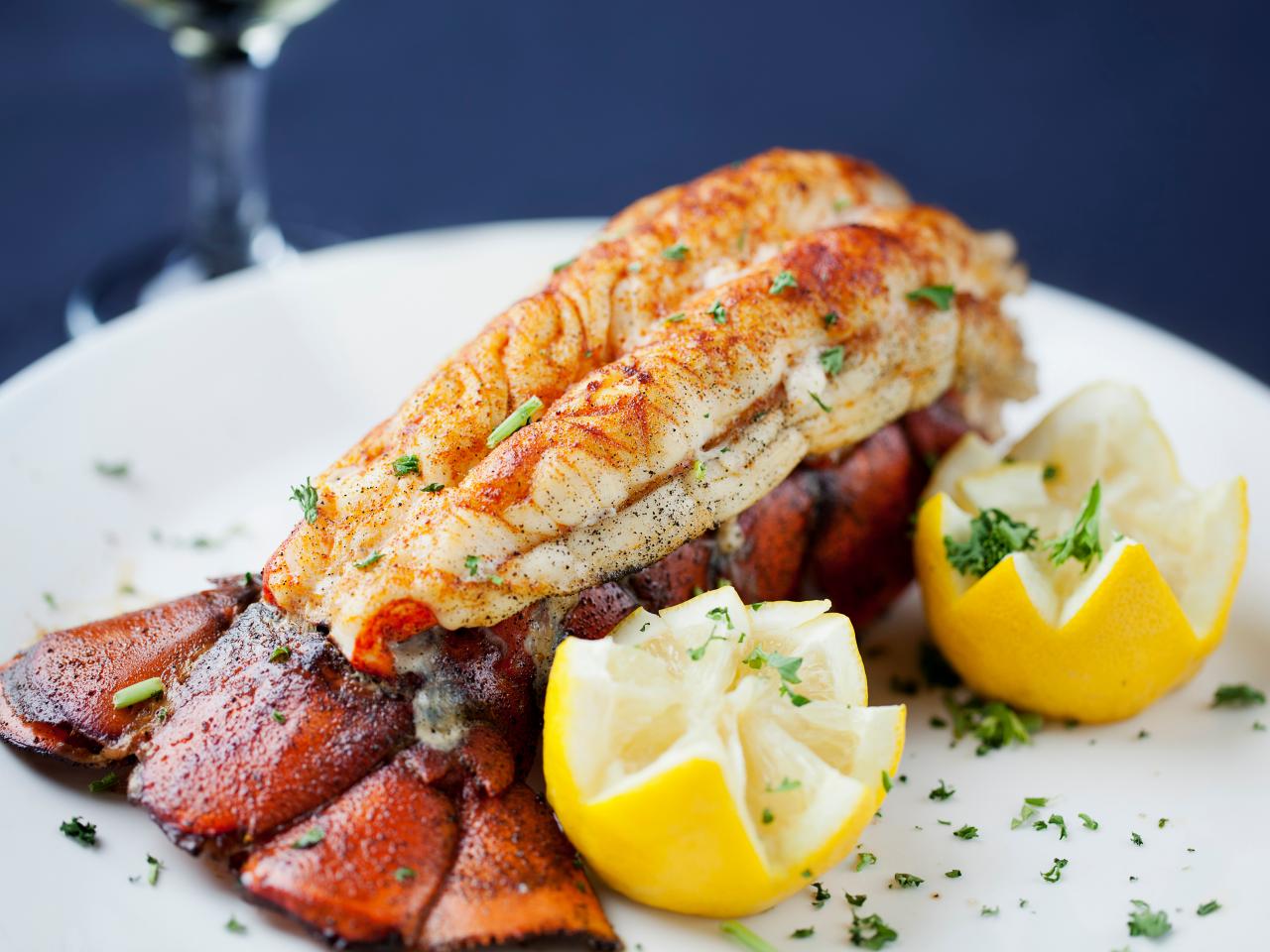
How To Cook Frozen Lobster Tails
There are five main ways that you can cook thawed frozen lobster tails. All of these are made with garlic, lemon juice, smoked paprika, cayenne pepper, and salted butter (or unsalted butter that you add salt to yourself).
- To broil, cut the tails in half with kitchen shears, brush them with butter, and put them on a baking sheet. Put it in the oven and broil it at 500 degrees F until it’s opaque and browned. It’s quick, but requires close attention to avoid burning.
- To boil, put the tails in a big pot of water that is boiling. Cook until the shell is red and the meat is soft. It’s simple, but can dilute flavor.
- Air Fry: Spread butter on the tails and cook them in an air fryer at 400 degrees F until they are fully cooked. It’s quick and good for you, but the flavor might not be as good as when you broil it.
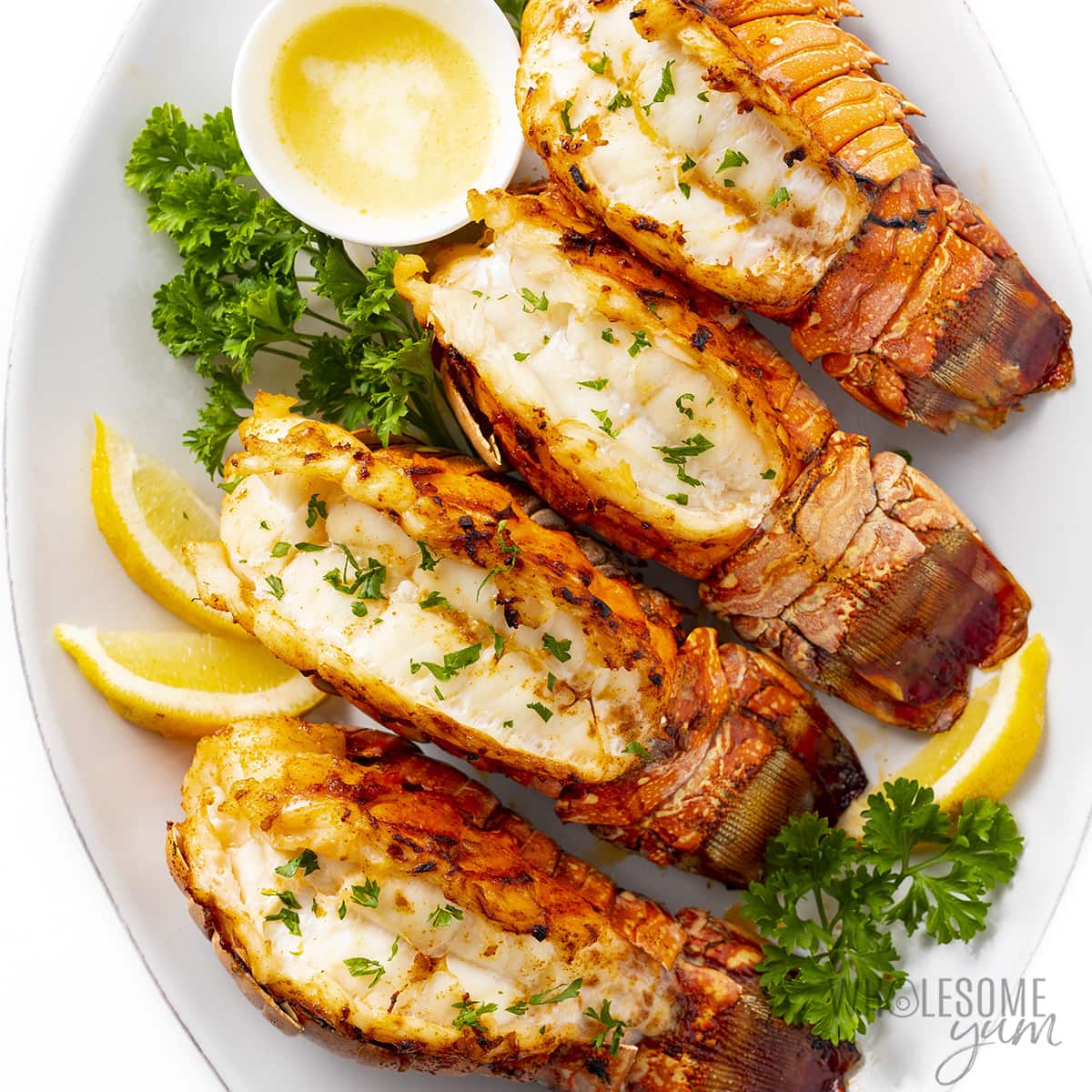
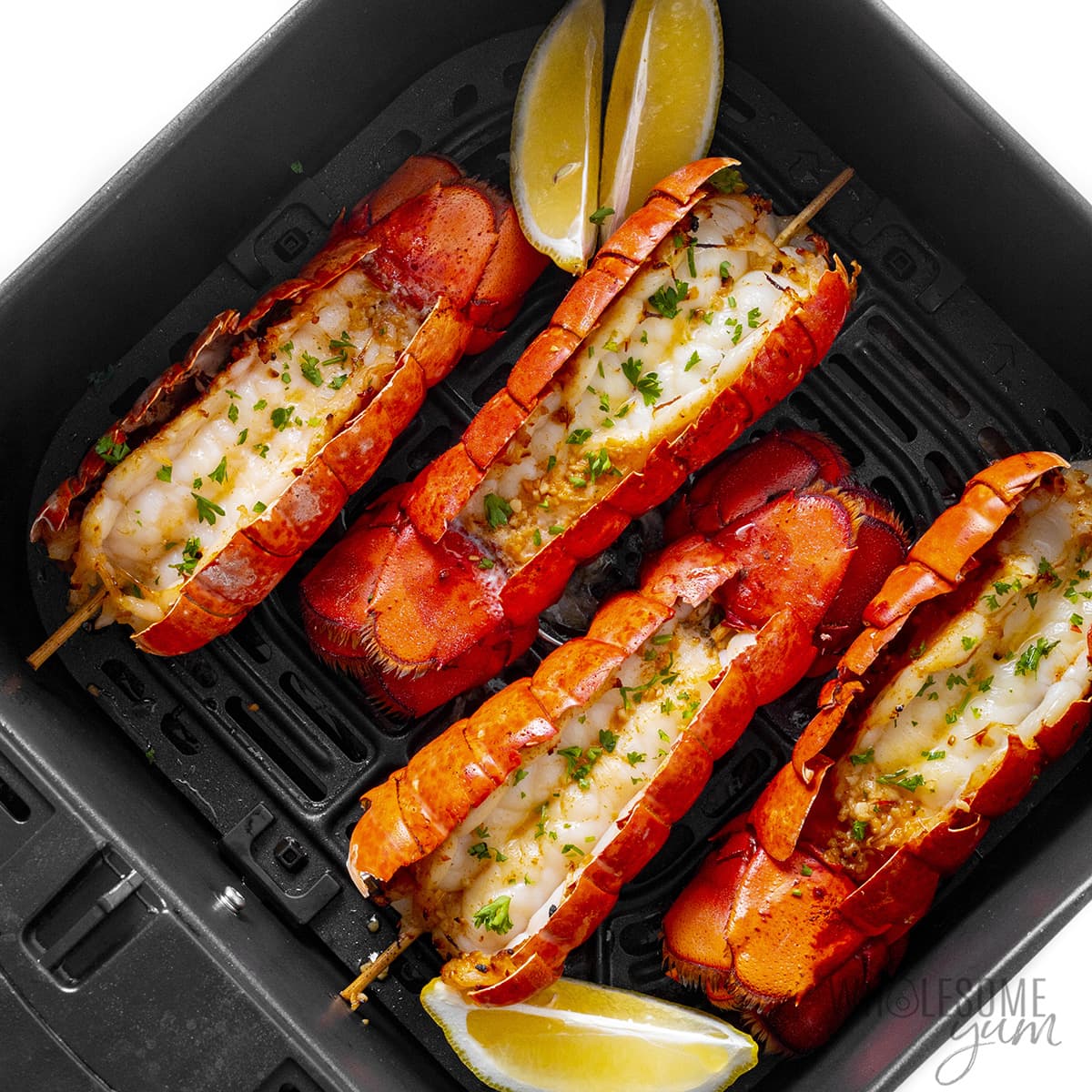
- Grill—Melt the butter and season the tails. Skewer them and grill them over medium-low heat until the meat is opaque. Grilling gives food a smoky flavor, but you have to be careful to flip it over so it cooks evenly.
- Poach: Cook the tails slowly in a pan with butter or seasoned broth until they are soft. It takes longer to do this way, but the texture is delicate and moist.
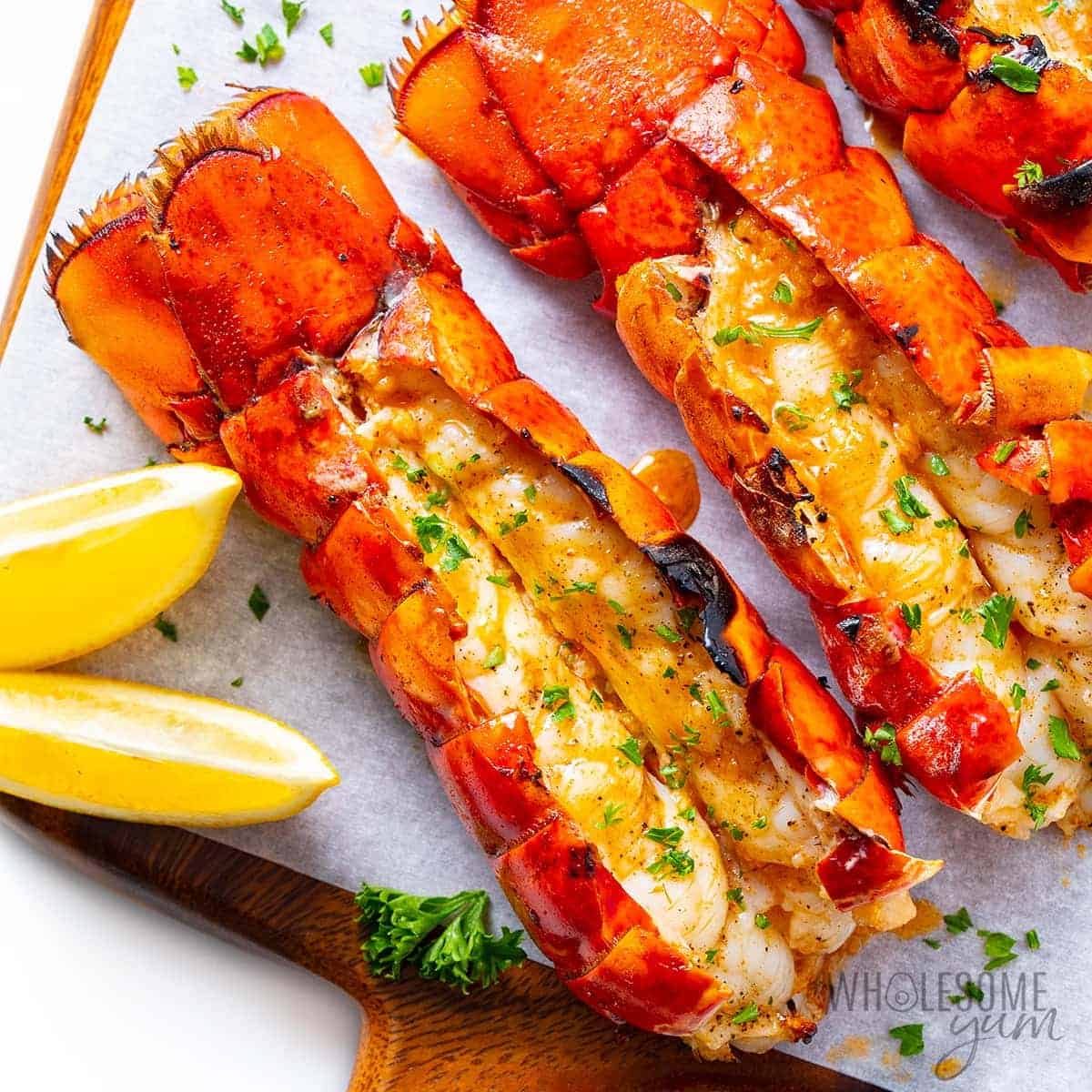
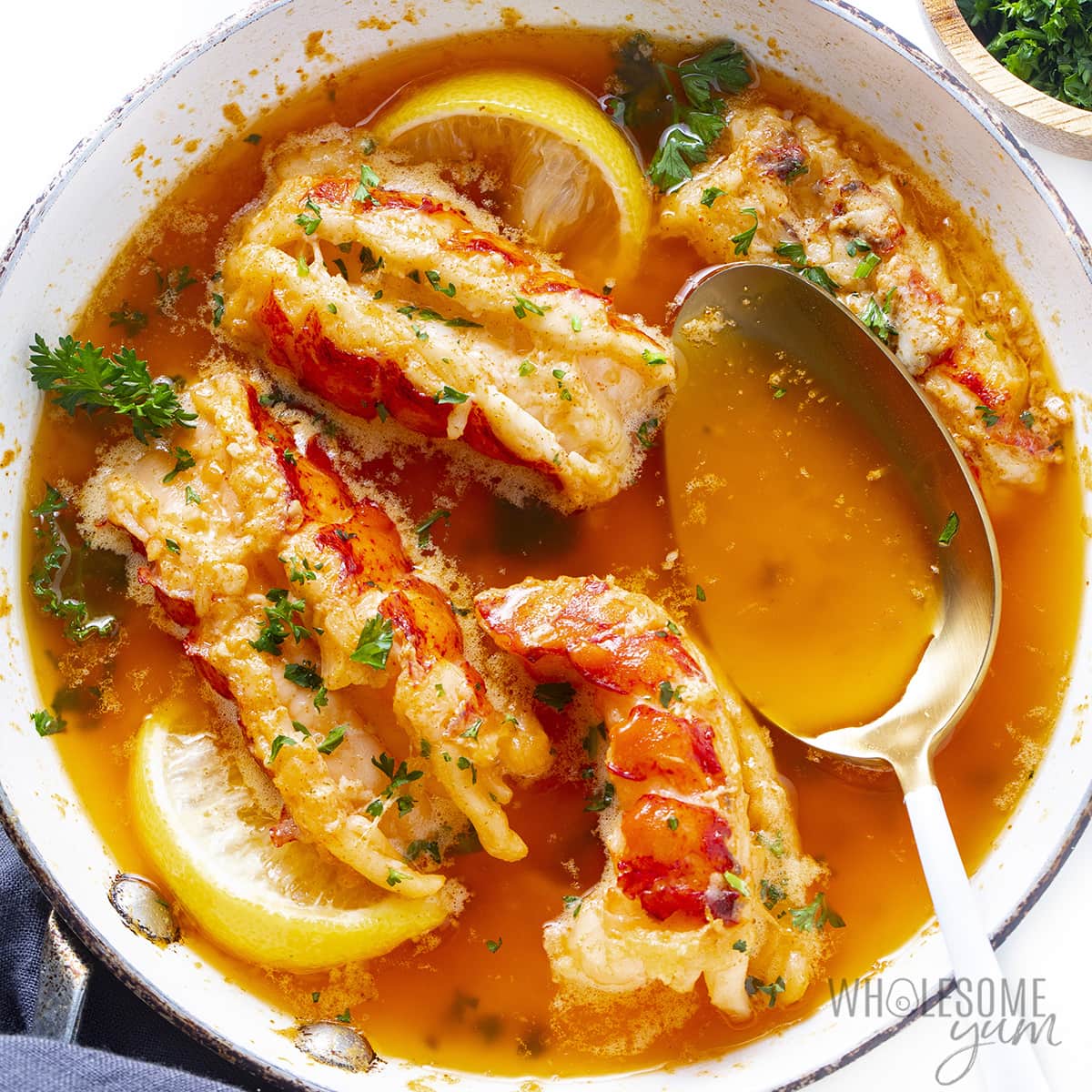
- Lobster tails that have been frozen: For up to 6 months, keep lobster tails that have been frozen wrapped in plastic or aluminum foil and put in a container that won’t let air in. If you bought them frozen at the store, you can put the package right in the freezer as long as they are still frozen.
- When lobster tails are thawed, put them in the fridge with a lid or an airtight container. For best quality and safety, use within one to two days.
- Cooked lobster: Put cooked lobster tails in a container that won’t let air in and put it in the fridge. Eat within two to three days. You can also make lobster thermidor or lobster salad with lobster meat that you have left over.
Lobster tail recipes pair well with a variety of quick and easy side dishes. Here are a few of my go-to choices:
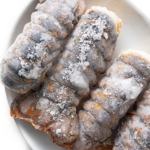
How To Thaw Frozen Lobster Tails
There are several methods you can use for thawing frozen lobster tails before cooking them, and each has pros and cons. Choose what works best for you, but whatever you do, avoid thawing on the counter without cold water for food safety reasons [*]. I recommend cold water lobsters over warm water if you can get them.
- Fridge overnight: Put the frozen food in the fridge overnight to thaw safely, still in the package. It’s the easiest and safest method but requires advance planning.
- Cold water in a bag on the counter: Put lobster tails in a bag and put it in cold water. Change the water every 30 minutes. This method works pretty quickly (it took about an hour for my 5-ounce tails to thaw), but it needs to be watched all the time to make sure it’s safe.
- Put the bagged tails in cold water in the fridge. Place the bag in cold water in the fridge. It’s safer than counter-thawing, and you don’t have to change the water very often. It takes more time than the counter method but less time than doing it in the package.
- Bag under running cold water—Under running cold water, thaw frozen lobster It’s the fastest way, but it wastes water and still takes some time.
- Microwave thaw setting—To thaw something quickly, use the microwave’s thaw setting. This method is quick, but the edges may not cook evenly, and it’s not the best way to make food.
![]()
IMPORTANT: With any of these methods, avoid warm water.
Use only cold water, as warm water can cause bacteria to grow.

